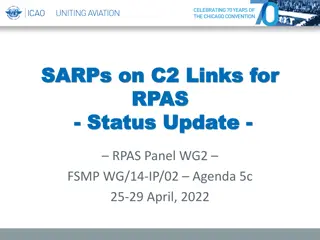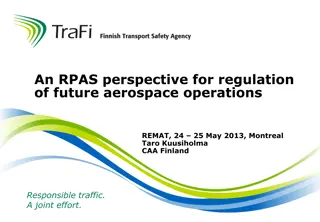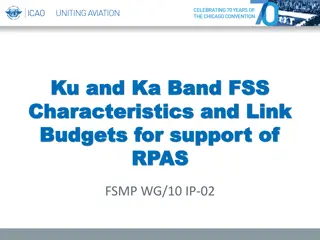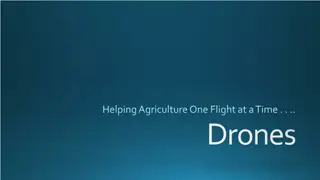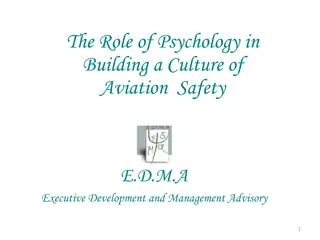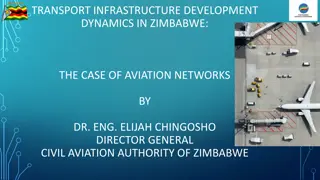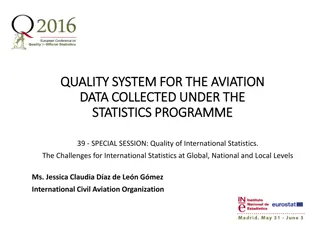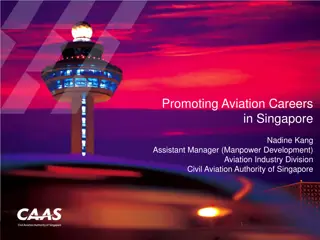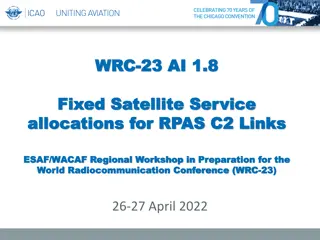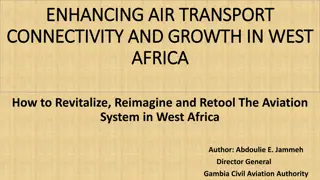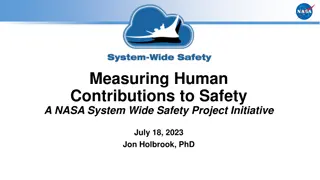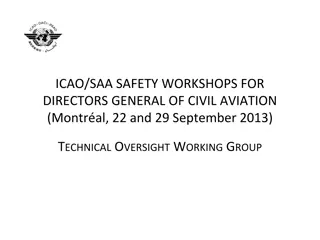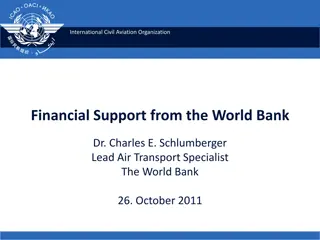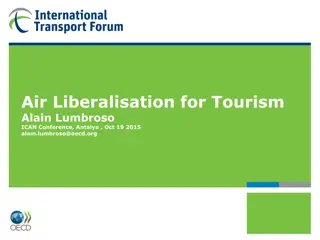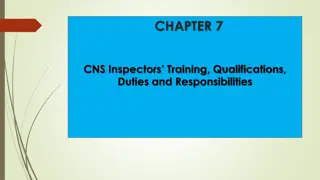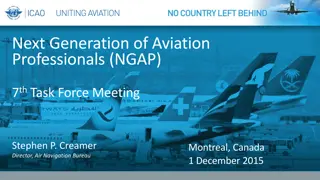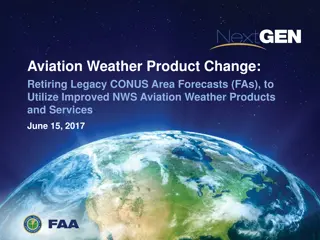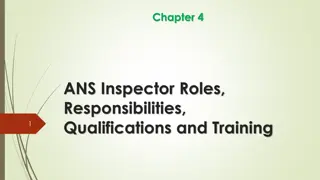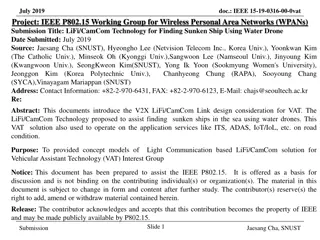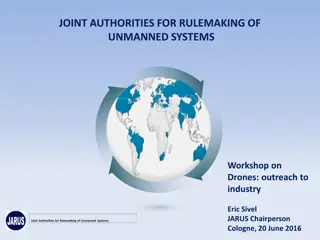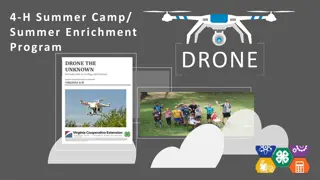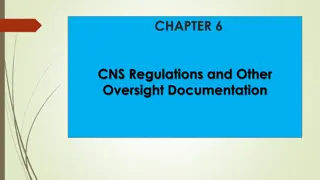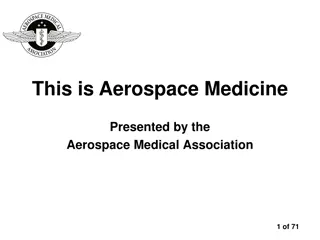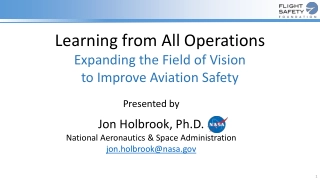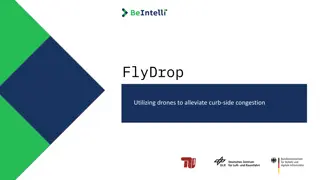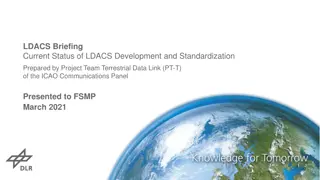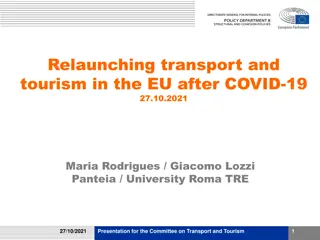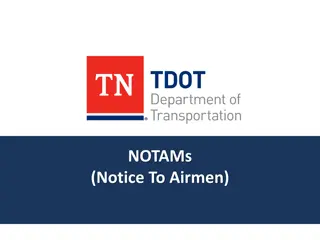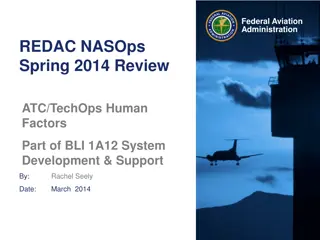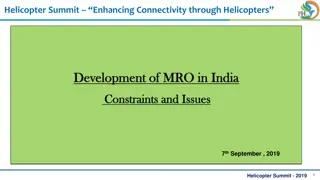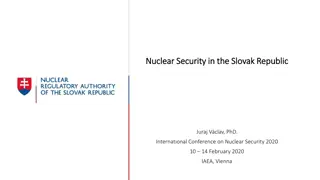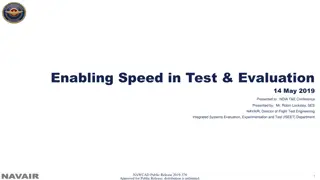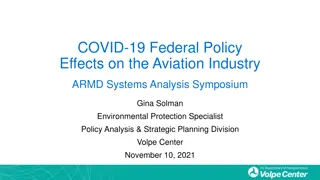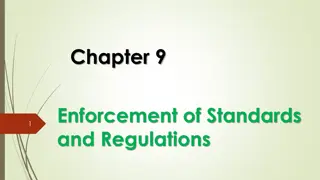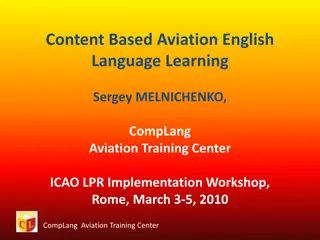Challenges and Opportunities in RPAS/Drones Impact on Aviation Safety and Security
The conference emphasized the importance of public awareness, alignment of RPAS terminology and standards, global standardization efforts for UAS Traffic Management, and involvement of ANSPs in UTM development. Key points included e-tracking systems, safety risks mitigation, registration requirements, equipage compliance, collision impacts, stakeholder responsibilities, and safety data collection for UAS operations.
Download Presentation

Please find below an Image/Link to download the presentation.
The content on the website is provided AS IS for your information and personal use only. It may not be sold, licensed, or shared on other websites without obtaining consent from the author. Download presentation by click this link. If you encounter any issues during the download, it is possible that the publisher has removed the file from their server.
E N D
Presentation Transcript
The use of RPAS/drones and the impact on aviation safety and security Challenges and Opportunities Conclusions
The Conference agreed on: The need for an extensive public awareness campaign at global- regional- national levels towards the general public, recreational / occasional drone users as well as commercial clients (to be aware of the safety risks, duties, liabilities, insurance requirements, responsibilities and third party privacy issues associated with drone operations); The need to pursue alignment of RPAS terminology, standards and definitions and subsequent education of the public at large; The need to provide for a global standardization the undergoing worldwide efforts on researching and developing solutions for Unmanned Aircraft System (UAS) Traffic Management (UTM);
The Conference agreed on : ANSPs involvement in the development of the UTM concept required to guarantee the safety for all airspace users, especially at boundaries , and ensure the interpretability of the UTM and ATM systems. An e-tracking system for safety and law enforcement purposes should be also explored. UAS safety risks concerning critical airspace, terrain, and buildings can be significantly reduced through Technical Performance Limitations by means of built-in geo-fencing and altitude / distance restrictions; Identifying clear responsibilities, between relevant authorities at national level and increase in the effectiveness of Local enforcement for S-UAS;
The Conference agreed on: The need for registration of all UAS - find the most appropriate means to ensure positive identification of owners, operators, pilots, observers. The need of RPAS to comply with the equipage requirements for the airspace they are operate in, regardless of size; The need to closely monitor the presence of RPAS in a regulated airspace (electronic fencing possible); DAA, including Anti-collision equipment (ACAS) should be an additional safety net when integrating RPAS in the existing ATM system;
The Conference agreed on: The need to urgently research into the impact of collision of UAS with other aircraft; Responsibilities amongst stakeholders (regulators, manufacturers, users ,pilots) of small drones flights must be fairly distributed and adequately monitored; Systematic safety data (occurrences) collection and analysis. Identify both traditional and new types of data required for accident , incident investigations; Employ both traditional and new hazard analysis and risk assessment methods depending on the adequacy and reliability of data
E-R-I REGULATE Proportionally and Harmonized (approach to effective regulations and a pragmatic method of firm enforcement) EDUCATE Know Before You Fly INTEGRATE We all share the same airspace


